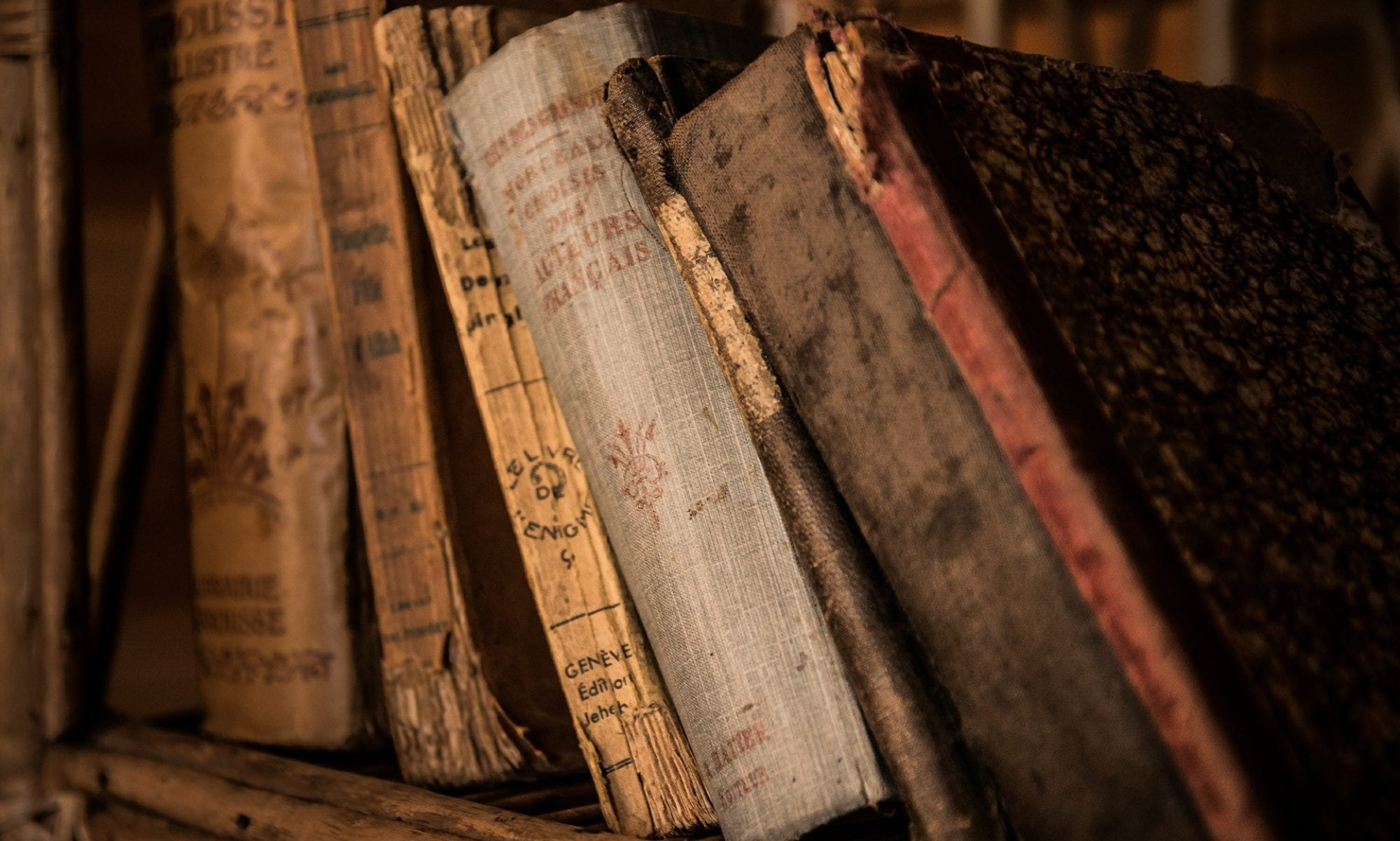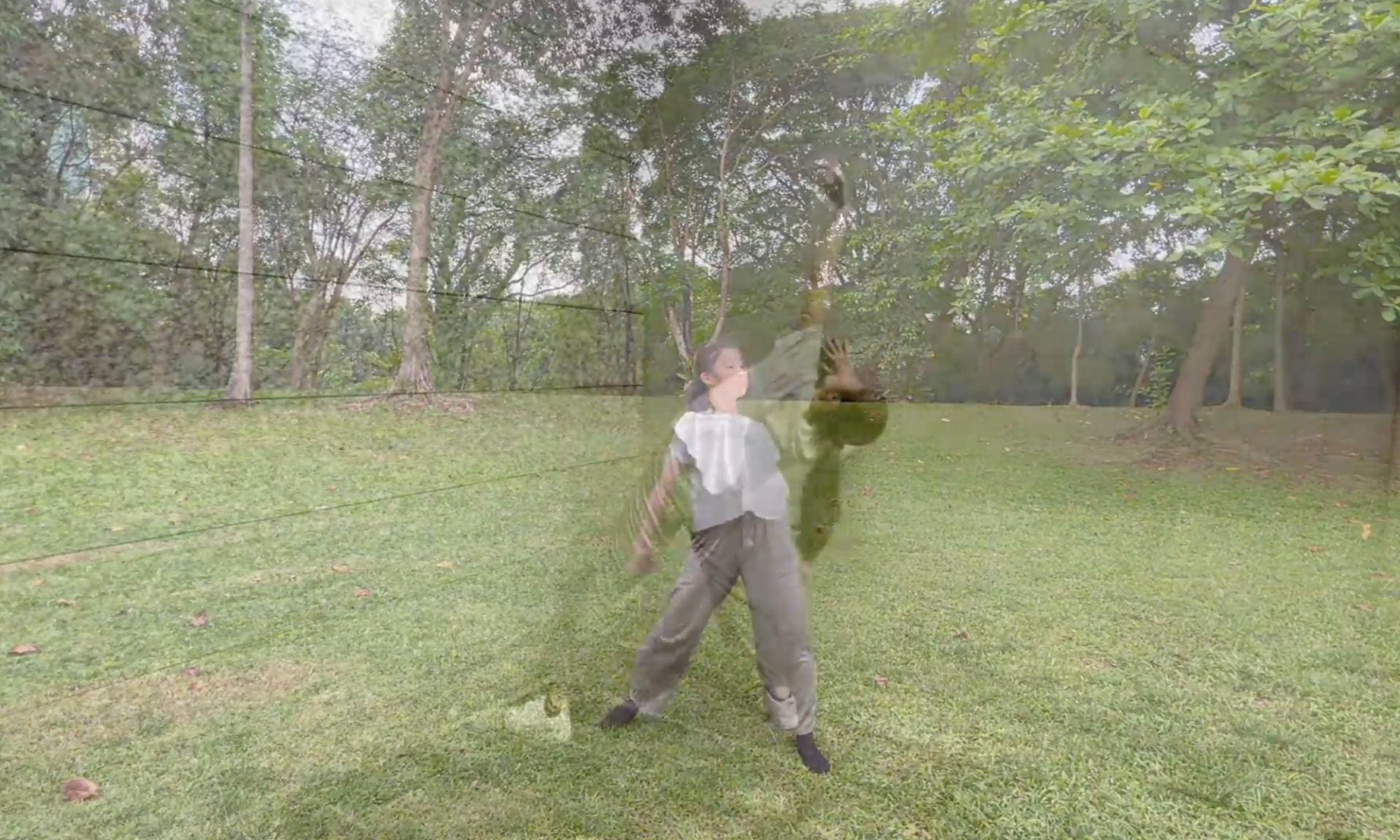CREATIVE PROJECT BY CLAIRE ZHAI HUAN TING (’24)
Mal Mariée: Dance as a Medium for Resistance
Performing Art (Dance)
An Interpretation of “Laüstic“
Medieval Romance: Magic and the Supernatural (YHU2309)
2022
NOTE
Unfortunately, the quality of this video has been reduced due to site limitations on file size. To watch this video at a higher resolution, please click on the following link:
Mal Mariée: Dance as a Medium for Resistance – CLAIRE ZHAI HUAN TING (’24)
Artist’s Remarks
“Laüstic” is a poem that retells the experience of entrapment, encapsulated by the term Mal Mariée, a literary trope that appeared commonly in Medieval Romance. It refers to an unhappily married woman, under the constant surveillance and control of her husband. This piece of work seeks to pay tribute to the experiences of struggle of the female protagonist, and to explore dance as a medium for resistance, transposed to a modern setting. The definition of the body as a “complex, contradictory, and ever changing cultural site of ‘discursive intercourse’ which is constructed dialogically by the dancer and her audiences” (Reed, 519) equips movement with the tools to not only replicate experiences from the past, but also to inject new meaning into the endeavors and actions of characters. In this project, dance is examined as a channel for non-verbal communication, a physically situated activity that yields implicit meaning, and finally as a means for agency in the form of embodiment, therefore reflecting its capacity for resistance.
In a setting where communication between the lovers was restricted, and eventually denied, dance as a form of non-verbal communication evades surveillance, and subverts the mal-mariée trope. In the poem, the lovers’ opportunity for communication is constrained to talking at the lady’s bedroom window (“Laüstic”, 40). The fact that it is the only time where “she speaks to him and he to her”, shows the fleeting nature of their mutual companionship, heightened by the reciprocal phrasing of the line (“Laüstic“, 42). Despite the short physical distance between the lovers given that “he lived close by” (“Laüstic“, 28), the absoluteness of the obstacle they faced in communication became a defining feature of the relationship. This barrier in communication is evoked through movements that explore the idea of distance – tracing the length from one shoulder to the end of the arm, measuring distance within the space of two palms, gauging height from body to ground, closing the space between two elbows etc. As love relationships are characterized by “loving speech” and proclamations of love, the lack of freedom to interact intimately with each other as lovers takes on symbolic significance (“Laüstic”, 56). Furthermore, the “great care and secrecy” with which the lovers had to approach their relationship is represented by the cautious steps and instability of movement (“Laüstic”, 30), connoting the precarious quality of their communication, almost like trying to navigate around the “nets”, “snares” and “traps” meant to capture the nightingale (“Laüstic”, 96). The moment that the dancer loses balance and falls to the ground mimics the moment that the nightingale gets caught in the trap (“Laüstic”, 96), the suddenness of the movement mirroring the rupture in the secrecy of communication between the lovers. Yet, at the same time, the dance conveys the agony of the lovers in trying to establish a private space to connect with each other, baring open the challenges of distance and surveillance faced. In doing so, it serves as a “system of signs that expresses ideas”, where the “evolutionary value of dance lies in its effectiveness as a mode of nonverbal communication” (Blacking, 89-91). By perceiving dance as “dynamically embodied action” and a form of “talk from the body” (Warburton, 68), it can be argued that the denial of communication between the lovers is restored by movement that seeks to remember and communicate their suffering, thereby doing their torment justice.
In accompaniment to the dance, it is also important to recognize the space in which the movement is presented, where in this poem, it calls attention to the tension between containment and release. Dance does not occur in a vacuum, but is a “situated activity” that “takes place in the context of a real-world environment” (Warburton, 67). Such an understanding is particularly key to this interpretation of “Laüstic”. In one scene, the background of concrete and stone represents the “great high wall of dark-hued stone” (“Laüstic”, 38), where the harshness of the material, the angular lines that it creates, and the small space that it delineates visualizes the insurmountable confines that the lady is subject to. The unforgiving material leaves the dancers’ revolt in vain, where merely fists and mental will prove insufficient to overcome physical imprisonment. Yet, the dancer’s movements of pushing against stone with the weight of her body, falling and catching herself, attempts to draw her own space with her limbs, and at times sharp movements, reflects the desire of the lady to assert her command and independence against the control of her husband. As the dancer emerges from the shadows and progresses towards the brightness, we see the motion of reaching towards the light source and the yearning to escape the feeling of being stranded and rooted to continued misery. Here, the fluidity of the movements is contrasted to the roughness and disrepair of the peeling wall, showing a silent resistance in the face of rugged and unrelenting forces.
The tension between containment and release is further expressed through the contrast between the idyllic setting of summer, and the inability of the lovers to consummate their love. Despite the merriment and carefree nature of the surroundings, where weather had made the “fields and forests green”, and “gardens, orchards, bloom again”, the lovers remained subject to the control and fury of the husband (“Laüstic”, 58-62 & 92). This is represented by the shifting locations from within walls to nature without artificial confines, reflecting the transient quality of freedom as each state is impermanent. In one particular scene, the melding of concrete and brick flooring with the greenery and open skies encapsulates the lady’s predicament – the sustained narrative of entrapment as opposed to the brief moments of respite at nighttime where she is able to reunite with her lover (“Laüstic”, 68). It depicts the experience of being tempted with freedom while never really having that option and perpetually being circumscribed within the unyielding confines of the Mal Mariée trope. These instances reflect that “space is not an inert backdrop for movement, but is integral to it, often providing fundamental orientation and meaning” (Reed, 523). In line with the intentions of this work, space informs movement by making the subject conscious of the implications of her movement quality, not in isolation, but in tandem and association with the surroundings that it inhabits.
Finally, this work examines the embodiment of resistance in dance, a way of remembering the weight that the story of “Laüstic” holds. By perceiving dance as “an expression and practice of relations of power and protest, resistance and complicity” (Reed, 505), we may recognize how movement is not one-dimensional and simply replicative in nature, but complex and “simultaneously productive and reproductive” (Reed, 521). Such a view is outlined by John Blacking, who argued that although “ritual may be enacted in the service of conservative and even oppressive institutions”, “the experience of performing the nonberbal movements and sounds may ultimately liberate the actors” (Reed, 521). This agency is already evident in the verbs connoting the lady’s intentions to “act now” and “make known to him this vicious tale”, rather than simply submitting to her fate (“Laüstic”, 132-134). The legacy of her message is ultimately symbolized by the reliquary, where it takes on not only figurative significance, but also physical embodiment of the seizure of freedom, carried by the weight of the nightingale’s body and the stones within the reliquary (“Laüstic”, 149-152). Here, the “reflection and resistance of cultural values” is situated in the nightingale and reliquary as an embodiment of both the acquiescence of the eventual failure to secure the liberty to love (Reed, 521), and the resilience of the protagonist in demanding that her story be told and remembered for its tragedy. The dancer’s leveled lifting of the reliquary (represented by the glass jar) carries a sense of reverence for a story that has survived time and space (“Laüstic”, 156-160), where the trail of falling sand and the tracks left on the ground mirror the memory and imprint left behind by “Laüstic”. At the very end of the film, the movement of the clasped hands, and the final release is reminiscent of the message of resistance exemplified by the nightingale being set free, despite its corporeal death. Hence, we may see dance “not as a retreat but rather as a means of remembering” (Reed, 526), explored through its channels for embodiment and thus resistance.
REFERENCES
Blacking, John. 1982. “Movement and Meaning: Dance in Social Anthropological Perspective.” Dance Research: The Journal of the Society for Dance Research 1, no. 1 (April): 89-99. https://www.jstor.org/stable/1290805
Reed, Susan A. 1998. “The Politics and Poetics of Dance.” Annual Review of Anthropology 27:503-532. https://www.jstor.org/stable/223381
Warburton, Edward C. 2011. “Of Meanings and Movements: Re-Languaging Embodiment in Dance Phenomenology and Cognition.” Dance Research Journal 43, no. 2 (Winter): 65-83. https://www.jstor.org/stable/23266966


